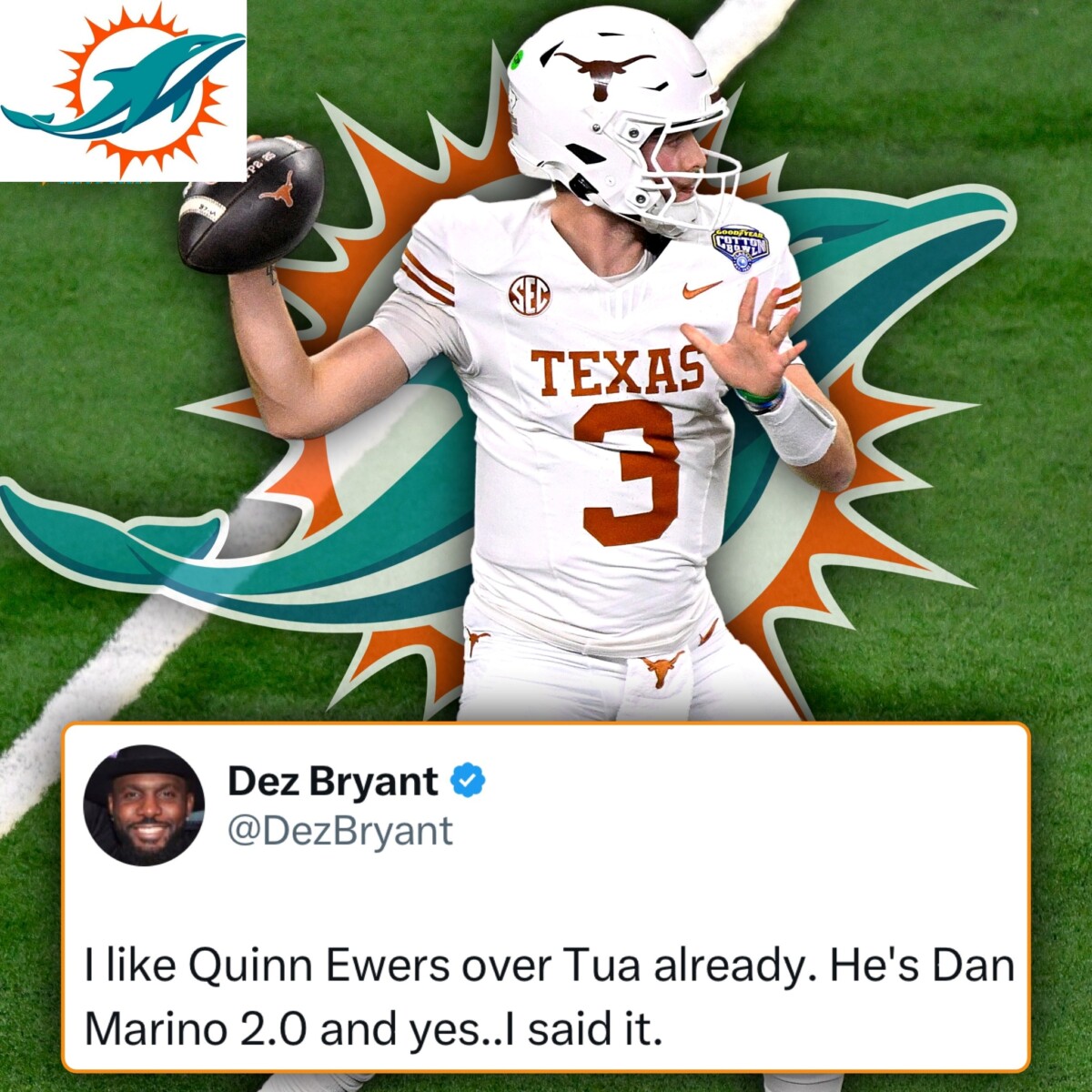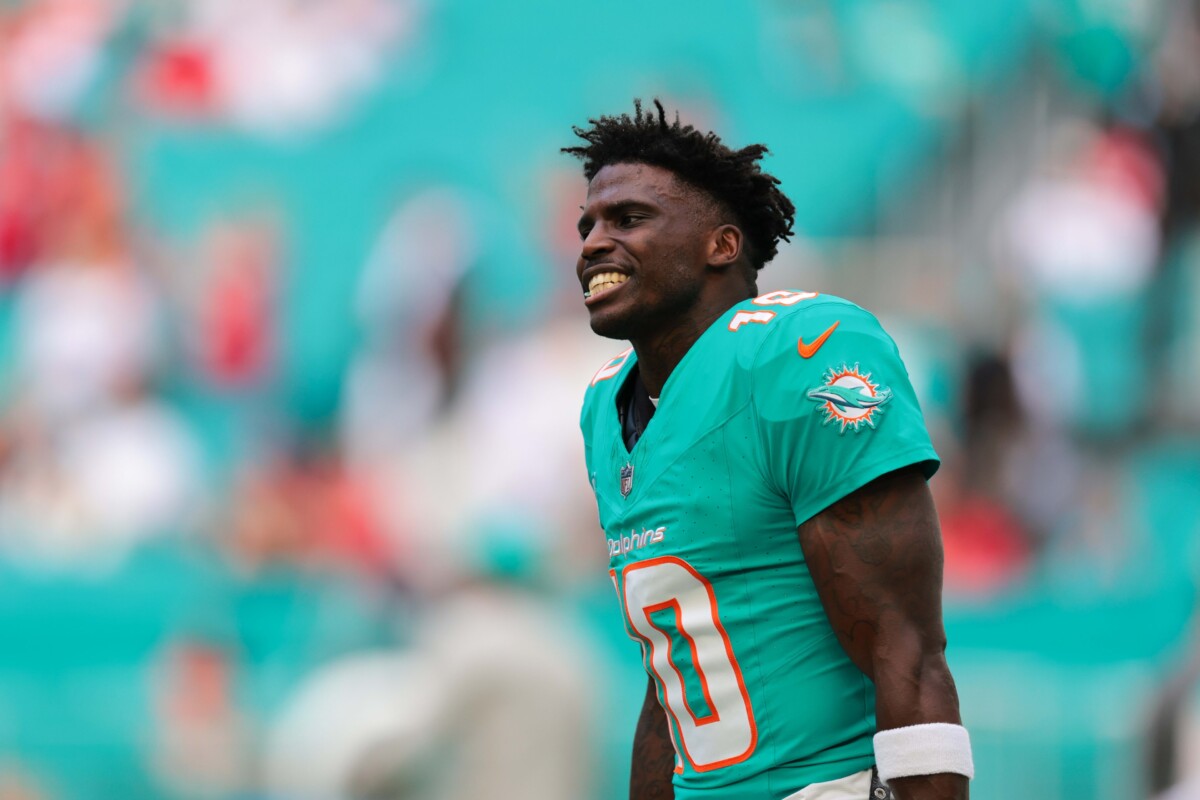While most of the attention during the 2025 NFL Draft focused on the surprising fall of Colorado Buffaloes quarterback Shedeur Sanders into the fifth round, Texas Longhorns quarterback Quinn Ewers dropping into the seventh round was remarkable because of his recruiting pedigree and pre-draft expectations that went unfulfilled.
So why did the Miami Dolphins keep Ewers from falling out of the draft entirely, instead picking him with the No. 231 overall pick to avoid an open competition for his services?
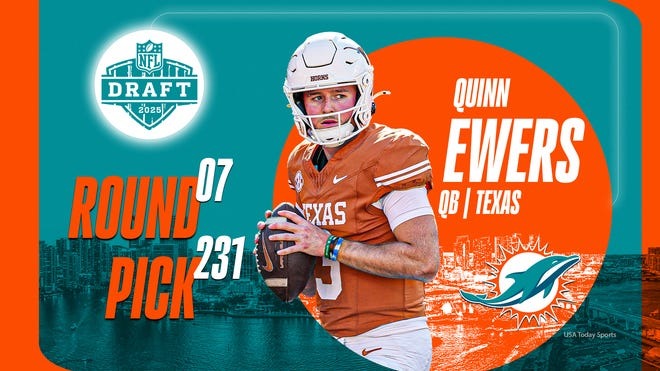
In an interview on Saturday, Dolphins general manager Chris Grier revealed that the seeds of the selection were sown at the Texas Pro Day last year in Austin when Grier and head coach Mike McDaniel first met with Ewers and discussed his attributes with Texas head coach Steve Sarkisian.
“Sark really likes him and was high on him, talking about him playing through the injuries this year, which affected his play a little bit,” Grier said. “But [Sarkisian] talked about his toughness, his mental toughness pushing through with the injury, the expectations, all the pressure with [Arch] Manning there coming in. He loved his competitiveness and how he plays, and how his teammates respond to him. So, he was someone that we always had an eye on and the opportunity at that point in the draft just made sense for us.”
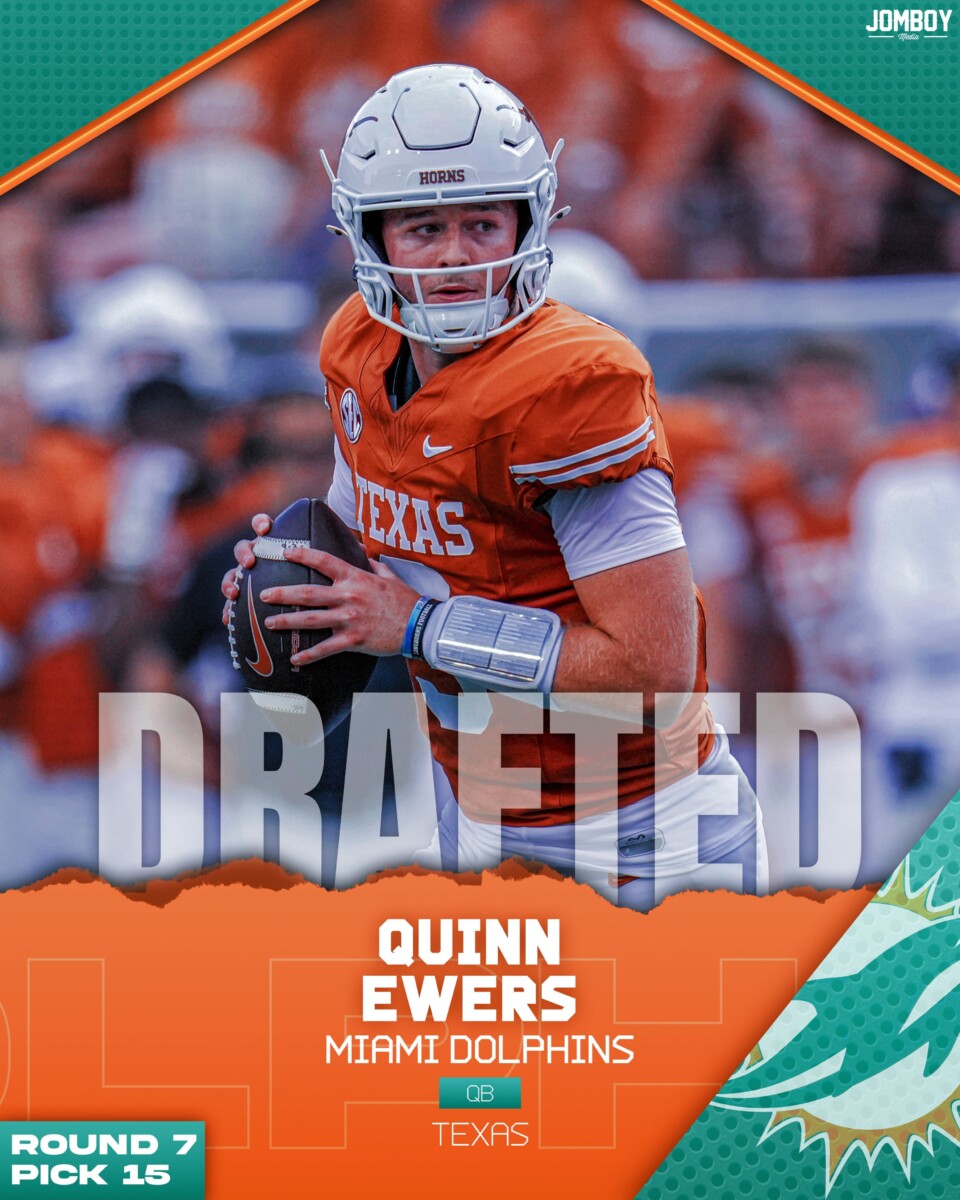
With the slot value of the No. 231 pick estimated at $4 million over four years, that’s a low opportunity cost for the Dolphins to secure whatever upside is still untapped in the No. 1 recruit in the 2021 recruiting class who was tabbed as a generational prospect.
In assessing the ties between Sarkisian and the Dolphins, the connections between the Texas head coach and the Miami organization help explain the social capital influencing the selection.
Grier’s father, Bobby, helped land his son a role in the personnel department of the New England Patriots in the 1990s when Pete Caroll was the head coach. Carroll, of course, was one of the two key mentors for Sarkisian, along with Nick Saban, who gave Sarkisian his break in coaching as the quarterbacks coach at USC in 2003 because of Sarkisian’s connection to Norm Chow, the offensive coordinator at BYU when Sarkisian was the quarterback for the Cougars who moved to Los Angeles to coordinator the Trojans attack and hired Sarkisian.
Sarkisian and Grier have enough of a connection from that tie that when Texas defensive line coach Bo Davis returned to his alma mater LSU last year, Grier recommended assistant defensive line coach Kenny Baker for the role and Sarkisian trusted Grier enough to take a chance on a young assistant who had never coached at the Power Four level.
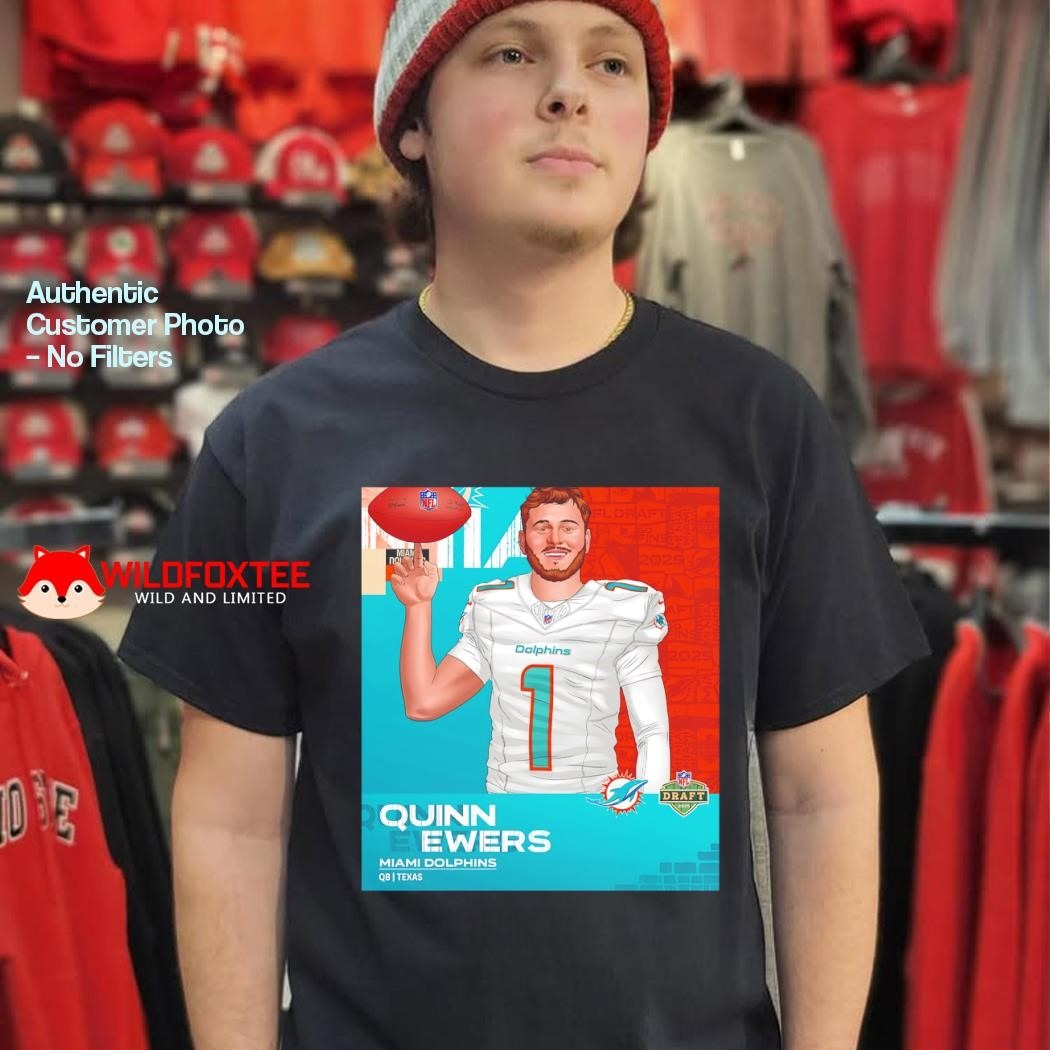
Beyond the affinity that Sarkisian and McDaniel have for using motion to get playmakers the ball in space, the Miami head coach was an offensive assistant for Atlanta Falcons head coach Dan Quinn for the two seasons before Sarkisian took over as the offensive coordinator.
But the similarities between the short passing games and emphasis on speed at the cost of size offensively make Ewers an intriguing fit in the Dolphins offense — Sarkisian stepped his Texas quarterback in the run-pass option, screen game, and quick passing game where Ewers excelled delivered accurate balls on time and in rhythm, including and especially when he was off platform.
In fact, given the lack of development from Ewers with his footwork on longer throws that demanded him to generate power through his lower body, whether because of injury or not, that deficiency precluded his fit in many NFL offenses and, indeed, limited the Texas offense over his three seasons as the starter.
“He can hit short and intermediate, but he’s like an all-arm thrower. He never uses his lower body and he’s not accurate down the field,” an AFC offensive coordinator told On3.
An AFC executive offered a similar assessment.
“The arm’s very average. There’s not a lot of talent there. He’s not a starter. He’s a distributor. He’s a point guard. He ain’t going to push it down the field.”
That assessment of Ewers may also sound familiar to Miami fans because it sounds like starter Tua Tugavailoa, who only attempted 24 of his 399 pass attempts in 2024 beyond 20 yards, completing 37.5 percent for two touchdowns and two interceptions.
So the McDaniel offense, as currently constructed, is built to reduce Tugavailoa’s deficiencies in arm strength and deep-ball accuracy by relying on creating space and leverage for playmakers in the short and intermediate passing game.
With four years and close to $140 million in base salary owed to Tugavailoa by the Dolphins and the organization attempting a reclamation project of 2021 No. 2 pick Zach Wilson as the backup, Ewers will have plenty of time to develop and attempt to address his weaknesses.
At the end of the draft, Ewers is a low-risk, developmental play for the Dolphins with a strong fit for the Texas quarterback in a selection influenced by the overlapping connections between Sarkisian, Grier, and McDaniel.


